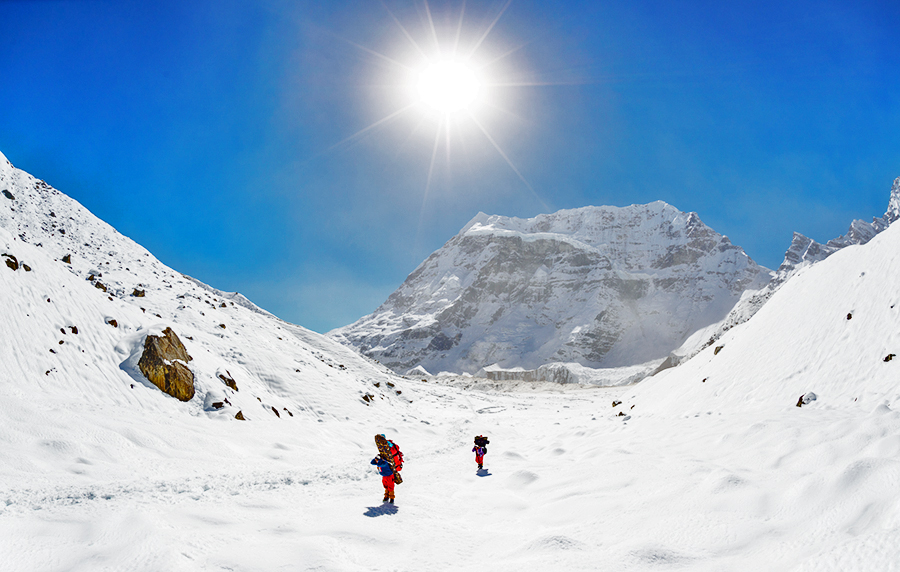Nepal is one of the world’s incomparable trekking and mountaineering destinations. The country is well known for its endless six, seven and eight thousand peaks. However, there is much more to Nepal than just trekking and mountaineering. “Nepal for all seasons” is a special slogan in Nepal; Nepalese cultural visits, pilgrims, spiritual retreats, yoga immersions, world heritage sites, white water rafting, short hikes, bungee jumping, paragliding and bird watching are a small selection of popular and common activities enjoyed year round by visitors to Nepal. The country’s spiritual history is world famous and, whatever the reason for travel to Nepal, visitors often leave the country describing their visit as enriching and meaningful. A majority of the Nepalese people is Hindus and there are many festivals occurring at many times throughout the year.
Given the diverse activities available to travelers and the “Nepal for all seasons” feature, tourists are able to create short and long adventures to suite their needs. In addition, given the inherent challenges with trekking and mountaineering, travelling in Spring and Autumn is definitely preferable when climate is drier and more temperate than in Summer and Winter. Even still, some travelers who are willing to brave cold temperatures or deal with rain, or those who only have Summer and Winter seasons available to travel, may still choose to travel to Nepal with very pleasant results. In fact, many travelers prefer the quieter down time.
Satori Adventures and Expeditions has provided below general information on each season to help guide travelers to make the best decision that will suit their travel preferences.
Spring (Mid-March until end of May):
Warmer weather and longer days make Spring a peak travel to Nepal a peak season. Rhododendrons burst into bloom in the hills towards the end of Spring, adding even more color to the already stunning vistas. Since Terai’s long grasses have been cut, Spring is also the best time for wildlife viewing, despite the increasing heat. Mountaineers, especially the most serious of climbers seeking to summit Everest, Lhotse, Makalu and Kanchanjungha, always climb during the Spring season.
Autumn (Beginning of Septembers until end of November):
The passage of summer and the wait for Winter makes Autumn a wonderful tourist season in Nepal, especially for mountaineering in the 7-8000 meter mountain ranges and for trekkers. Autumn is a peak trekking season since drier weather means clear skies and more spectacular mountain views. Booking flights well in advance is necessary as, beyond trekking and mountaineering, it is also the busiest time of year for mountain flights, paragliding, white river rafting, short hikes, cultural and heritage tours and wildlife viewing activities.
Summer (Beginning of June until end of August):
Summer is the monsoon season in Nepal with hot and wet weather. It rains almost every day with occasional thunderstorms in the evening and lush, green vegetation is, as expected, plentiful during Summer. Unfortunately, the mountainous and hilly terrain together with the monsoon and high river waters make travel to Nepal quite dangerous in this season.
Winter (December until beginning of March):
The Winter season is cold, particularly mornings and evenings, though mostly clear and stable. It does not snow in major cities (like Kathmandu, Pokhara and Chitwan) or at elevations below 2000 meters. Above 3000 meters, the temperature is particularly cold and not generally suitable for high pass trekking and mountaineering. That said, it is an excellent time to visit the Terai region and even the mountains – if you can handle the cold weather. January and February will be very cold, for example, but will afford the fewer tourists incredible panoramic views and quieter trekking trails.


